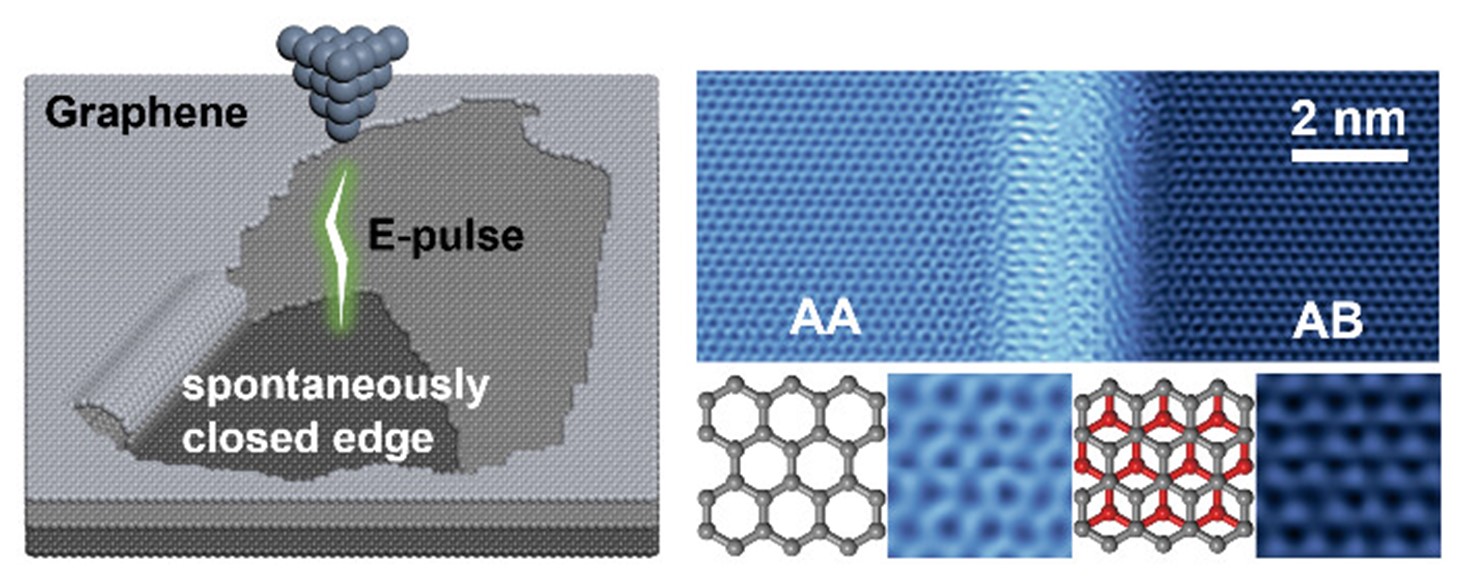Atomic-scale manufacture is a critical technology required for future atomic-scale information devices. Among various techniques, scanning probe microscopy-based tip manipulation plays an essential role in atomic-scale manufacturing, enabling the construction and precise tuning of atomic structures with single-atom accuracy. For materials like graphene and other 2D materials, this technique allows for the precision folding of structures at the atomic level. Future graphene devices would require patterning of the wafer scale film with atomic precision. However, atomic reconstruction and impurity adsorption at newly formed edges often impact the device's transport properties. The microscopic mechanisms behind atomic-level cutting and the evolution of edge structures in graphene remain a largely unexplored scientific challenge.
To address this, a team led by Professor Yi Pan from the State Key Laboratory for Mechanical Behavior of Materials and the Spintronics and Quantum Devices Center, Xi’an Jiaotong University (XJTU), employed scanning tunneling microscopy (STM) as a tool for atomic-level processing. They successfully created specific edge orientations of graphene under ultra-high vacuum conditions (<10⁻⁸ Pa) and ultra-low temperatures (4.5 K), based on the field evaporation effect at STM tunneling junctions. Remarkably, they observed a spontaneous self-healing phenomenon at the newly prepared bilayer graphene zigzag and armchair edges, where transient carbon free radicals at the top and bottom edges spontaneously bond, forming perfect half-tubular closed structures with no dangling bonds. Local scanning tunneling spectroscopy measurements revealed van Hove singularity features in the electronic structure, confirming that this closed structure is identical to the half-tubular boundary formed by folding single-layer graphene. Additionally, the self-healing at the armchair edges leads to a locked AA-stacked bilayer structure due to the sliding of the top layer for one bond length. These findings provide a new mechanism for high-quality atomic-scale manufacturing processes for graphene-based nano-devices in the future.

This research paper entitled “Spontaneous Closing of Torn Bilayer Graphene Edges via a Self-Healing Mechanism” has been published in Nano Letters recently. The State Key Laboratory for Mechanical Behavior of Materials, Xi’an Jiaotong University, is the sole institution responsible for the paper. Xueyan Li, a PhD student from the School of Materials Science and Engineering, Xi’an Jiaotong University, is the first author, and Professor Yi Pan is the corresponding author.
Additionally, the team has recently used STM atomic manipulation techniques to induce double wrinkles with local Kekulé-type electronic structure in monolayer graphene (Carbon, 2025, 238, 120299); as well as to manipulate the polarity of structures bubbles in polycrystalline graphene domain boundaries (Carbon, 2026, 120890, in press), which have introduced a new method for the atomic-level structure fine tuning of 2D materials. These works were supported by the National Key R&D Program of China, the National Natural Science Foundation of China, and the National Youth Talent Project.
Paper link: https://pubs.acs.org/doi/10.1021/acs.nanolett.5c04158
Professor Yi Pan's homepage: https://gr.xjtu.edu.cn/en/web/yi.pan


